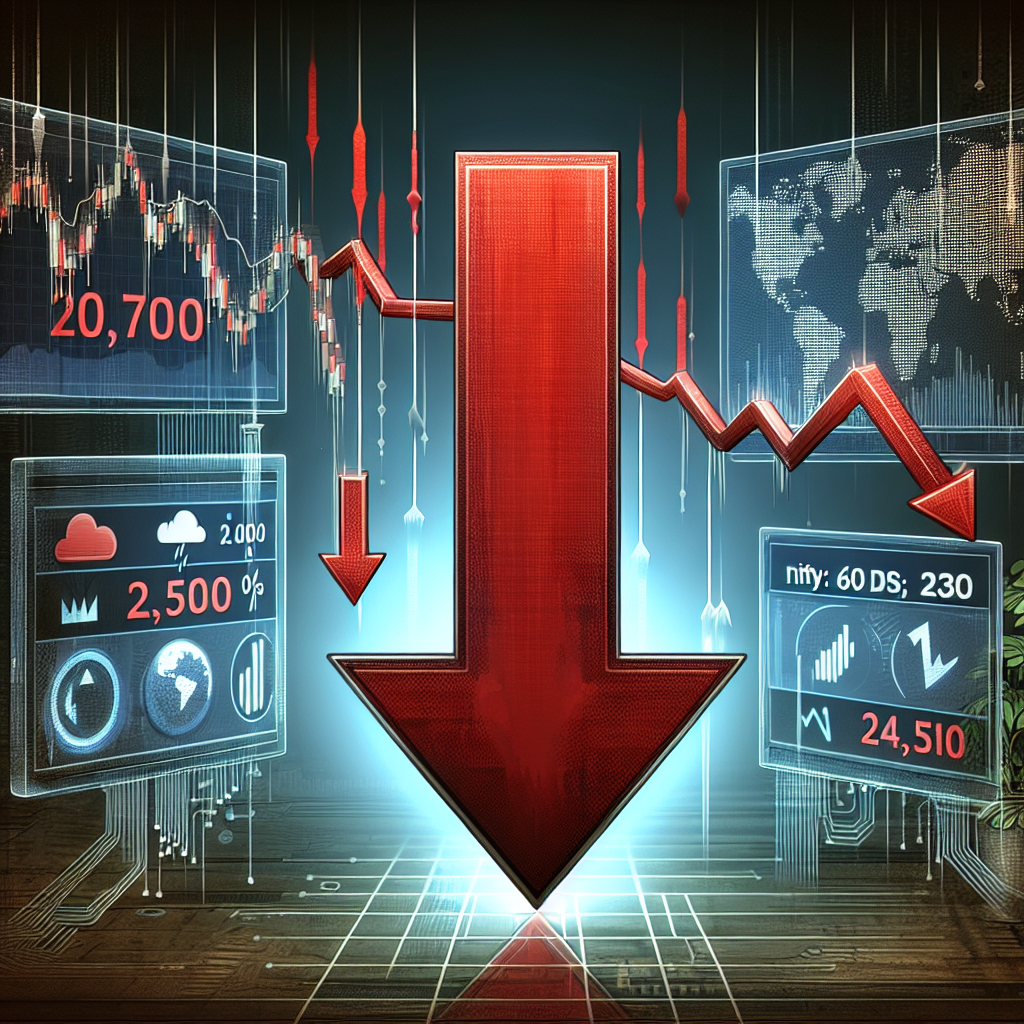Stock Market Sees Sharp Decline: A Closer Look at Key Factors Behind the Sell-Off
The Indian stock markets witnessed a significant correction today, with benchmark indices Sensex falling over 700 points and the Nifty50 slipping below the crucial 24,550 mark. This sharp drop spooked investors and sent ripples across major sectors, particularly finance and IT. But what exactly triggered this pullback? Let’s explore the six key reasons behind today’s fall in the Indian stock markets.
1. Pressure on Financial and IT Sectors
Two of the heaviest sectors on the Indian indices — financial and IT — bore the brunt of the market downturn.
- Banking and financial stocks faced selling pressure amid concerns over asset quality and high valuations.
- IT stocks were impacted by weakening global demand and cautious guidance from US-based technology clients, which serve as primary revenue sources for Indian IT firms.
The combined weakness in these two heavyweight sectors dragged down overall market sentiment.
2. Global Trade Tensions and US Fiscal Concerns
Global macroeconomic uncertainties are playing an outsized role in the current equity market environment.
- Sluggish global economic activity and trade war fears have made investors wary of deploying fresh capital in emerging markets.
- The United States’ ballooning fiscal deficit and concerns over government spending and borrowing have raised global risk aversion.
With rising uncertainty overseas, investors are pulling back domestic equity exposure and switching to safe-haven assets.
3. Trump’s Tariff Threats Shake Metal Stocks
Former US President Donald Trump’s recent announcements regarding renewed tariffs on imported goods have significantly impacted global markets, and Indian exporters are no exception.
- Metal and commodity-exporting companies in India are at risk of reduced profitability due to the potential trade barriers.
- This sentiment pushed down shares of steel, aluminum, and copper producers on the Indian bourses today.
The ripple effect of such macro events on trade-sensitive sectors has further weighed down the market.
4. Weak Global Economic Data
The fresh release of dismal economic indicators from major global economies added to the pessimism.
- Leading economies like the US, China, and Europe reported lower-than-expected manufacturing and services data.
- These reports raised concerns about a potential global slowdown, reducing investor risk appetite in equity markets.
The Indian market, closely aligned with global cues, mirrored that cautious global outlook.
5. Crude Oil Volatility & Rising Energy Prices
Brent crude and WTI prices have remained volatile lately, driven by geopolitical tensions and supply risks. This volatility has a direct correlation with domestic inflation and corporate profitability.
- High energy prices have raised operating costs for companies and heightened inflationary pressures, which in turn can affect RBI’s monetary stance.
This instability has kept market participants nervous about corporate earnings in key sectors like FMCG, transportation, and logistics.
6. Investor Uncertainty Ahead of RBI Policy Announcement
With the Reserve Bank of India’s monetary policy meeting right around the corner, investors are holding a cautious stance.
- There is speculation on whether the central bank might hike rates or maintain its current policy to tackle inflation pressures.
- This uncertainty has triggered profit-booking ahead of the announcement, adding selling pressure in broader markets.
What Should Investors Do Now?
The current decline is a classic mix of domestic and global uncertainties. Investors are understandably nervous, but experts suggest maintaining a long-term perspective.
Key Takeaways for Investors:
- Stay diversified: Avoid overly concentrating your investments in volatile sectors like metals and banking in uncertain times.
- Monitor global cues: Keep an eye on US fiscal developments, trade policies, and international market movements.
- Wait for RBI guidance: Policy direction from India’s central bank can offer clarity on interest rates and economic outlook.
Conclusion
Today’s market correction reflects a culmination of uncertain global trade dynamics, sectoral weaknesses at home, policy anticipation, and commodity volatility. While such sell-offs are not uncommon in equity markets, strategic investors should see them as opportunities to rebalance their portfolios rather than react emotionally. As always, maintaining a well-researched investment approach remains key in navigating market volatility.



Leave a Reply